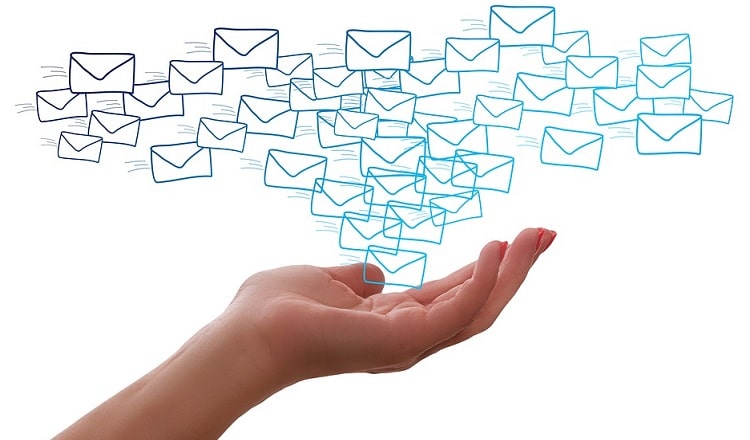7 Tips For Fighting Off Bounced Emails – What You Should Know!

TechsPlace | Email marketing is an integral part of any marketing campaign. The success of your email marketing effort doesn’t just depend on the quality of your promotional materials. No matter how hard you work on the content, it can’t bring results unless it’s delivered to the recipient.
If your emails bounce, your potential and existing clients can never receive the information you are trying to convey. Meanwhile, frequent bouncing could ruin your sender’s and domain reputation.
Achieving success in business depends on something as seemingly simple as an email bounce rate. Let’s take a closer look at what it is and how to deal with the problem successfully.
What Are Bounced Emails?
When an email bounces, it means it can’t be delivered to the sender for a certain reason. An email bounce rate is calculated by dividing the number of bounced emails by the total number of emails sent.
The bounce rate often depends on the quality of your mailing list. According to experts at Byteplant, a clean email list with engaged and active subscribers is the key to improving the bounce rate.
With a clean email list, your bounce rate is likely to be less than 3%. If you are regularly using email validators to clean it but still getting high bounce rates, you need to employ the following tips.
- Never Buy Email Addresses
Some companies opt for ready-to-use email lists in order to boost the number of potential customers, improve brand awareness, and increase profits.
In reality, when you are purchasing an email address or a list, you are buying a pig in a poke. These addresses may be invalid or contain spam traps. Sending emails to such addresses may result in a high bounce rate. Your messages are likely to end up in spam folders and be blacklisted.
By purchasing such email lists, you may put yourself in danger of violating the CAN-SPAM Act. Because you are sending emails to people without their permission.
- Get Extra Confirmation From Your Contacts
When you get email address information from your potential clients, make sure to “check twice”. The first check should be the validity of the address. Real-time email address validators can perform it. Many people make typos when entering their information. As a result, you get the wrong address.
Meanwhile, some people enter wrong addresses on purpose to get freebies and avoid receiving promotional materials.
To get such dangerous addresses off your list, always send a confirmation email. Ask the user to confirm the email address so you can safely use it for marketing efforts in the future.
- Monitor Bounced Emails
When emails come back as bounced, analyze the situation. Sometimes, the bounces come from the same email provider or domain. You can rectify the situation by removing your email from the blacklist by contacting the provider and asking for the reason your emails are blocked.
In some cases, email addresses are blocked by mistake. You can deal with the problem by investing 10 minutes of your time.
- Avoid Spam Filters
Spam filters monitor all incoming emails and send them to the spam folder based on certain criteria. It’s up to you to make sure your messages don’t fit these parameters.
Avoid indecent and abusive language. Don’t use all caps in the title or body of the message. Make sure your headers are filled with high-quality information.
Pay close attention to the content and your sender’s reputation in order to avoid the majority of spam filters. Consider checking your email against spam filter to make sure that it passes. You can use such spam-check tools as GlockApps to do it.
- Help Your Clients Update Email Addresses
People tend to change email addresses and abandon old ones. In order to keep in contact with your clients and avoid bounces, make it easy for users to update their email addresses. Encourage your clients to do it on your website or by using other sources of communication.
Make sure the process is straightforward enough to be done within seconds. The majority of people isn’t ready to go through lengthy procedures to keep you notified about an email change.
- Improve Your Sign-Up Form
Another way to reduce your bounce rate is to make sure your sign up form is straightforward. People tend to make mistakes when entering their information. Keep the number of them to the very minimum.
For example, you can have two different fields for the email address and domain. This way the client gets a chance to double-check what’s written.
Use a good captcha system for your sign-up forms so you don’t receive requests from fake addresses.
- Make an Email Schedule
Be consistent about sending emails to your subscribers. If you send them on a regular basis, your clients are unlikely to forget that they subscribed to your emails. Accordingly, they won’t end up in spam folders too often.
This doesn’t mean that you have to pound your clients with emails every day. Just make sure they get them once a week or, for example, every first Sunday of the month. The sending should be consistent.
Final Thoughts
Bounced emails can hinder your email marketing campaign tremendously. Make sure to keep your email list clean and use the above tips to reduce your bounce rate. The fewer emails bounce, the more conversion potential your marketing campaign has.
Maria has been writing articles for 5 years. She specializes in business and marketing. On her free time she loves to read and write about her travel experiences. You can find her doing this by the beach.





